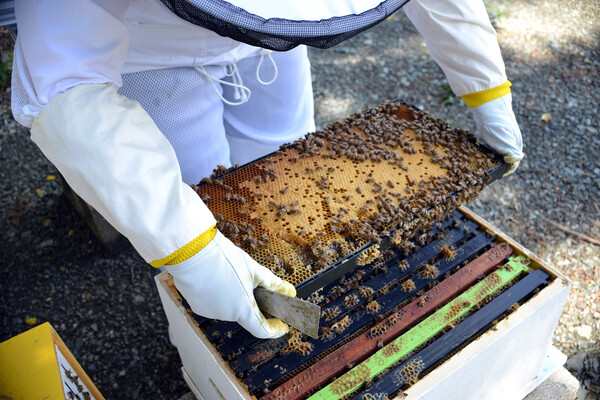
nocred
NASA wants to send humans to Mars by sometime in the 2030s. But with current technologies, the journey to the red planet would take some eight months, not to mention time spent on Mars once astronauts arrive, subjecting them to unhealthy amounts of radiation that the Earth’s magnetic shield protects against.
To understand the risks of and mitigation against such exposure, in 2008, NASA turned to a team from the Perelman School of Medicine, including radiation oncologist Keith Cengel and Ann Kennedy, the Richard Chamberlain Professor of Research Oncology. More recently, a new proton beam–equipped laboratory that opened on March 15 in the Ruth & Raymond Perelman Center for Advanced Medicine will allow the researchers to conduct more extensive studies, more frequently, to get to answers quicker.
“In the future, astronauts will undertake longer duration missions in space, bringing about a whole new set of problems we need to prepare for,” Kennedy says.
Radiation exposure leads to symptoms like nausea and vomiting, and at higher doses can trigger immune system and intestinal problems, as well as increased risks of cancer. High enough exposure can be fatal. With knowledge of how humans interact with such emissions—sunlight, for instance, or nuclear power plants—and what protects them, the disaster-mitigation community has plans in place should large-scale contact occur.
When it comes to space, however, scientists know that going beyond the Earth’s magnetic shield increases danger, but they don’t know how much greater the danger is, or in exactly what form it might come, or when. Cengel mentions coronal mass ejections (CMEs) as an example.
“The sun can build up stress along magnetic field lines. When that stress breaks, it ejects,” he says. That’s the CME. “It’s made up of mostly protons and ions, and whatever is between that and space gets [exposed to] radiation. It’s totally unpredictable. It can happen anytime, anywhere in free space.”
Having access to a proton beam like the one in the new lab means Penn researchers can examine these scenarios much more quickly and precisely. X-ray units, one way scientists generate and test radiation exposure, are self-contained; five experiments requires five machines. But a proton beam machine works differently.
Picture an arm and a hand. The proton beam travels down the arm, through the hand, and out a finger, siphoned off to a targeted area. Dose level and distribution can be manipulated, and unlike with X-ray beams, proton beams get to their destination and stop.
The researchers’ next step is to check off as many potential threats from NASA’s master list as possible.
“There is no zero risk. If you’re going to wait until you understand everything, you’ll never go anywhere,” Cengel says. “You have to get to acceptable risk that aligns with the needs of the mission’s parameters. We work as hard as we can, as fast as we can.”
Michele W. Berger

nocred

The sun shades on the Vagelos Institute for Energy Science and Technology.
nocred

Image: Kindamorphic via Getty Images

nocred